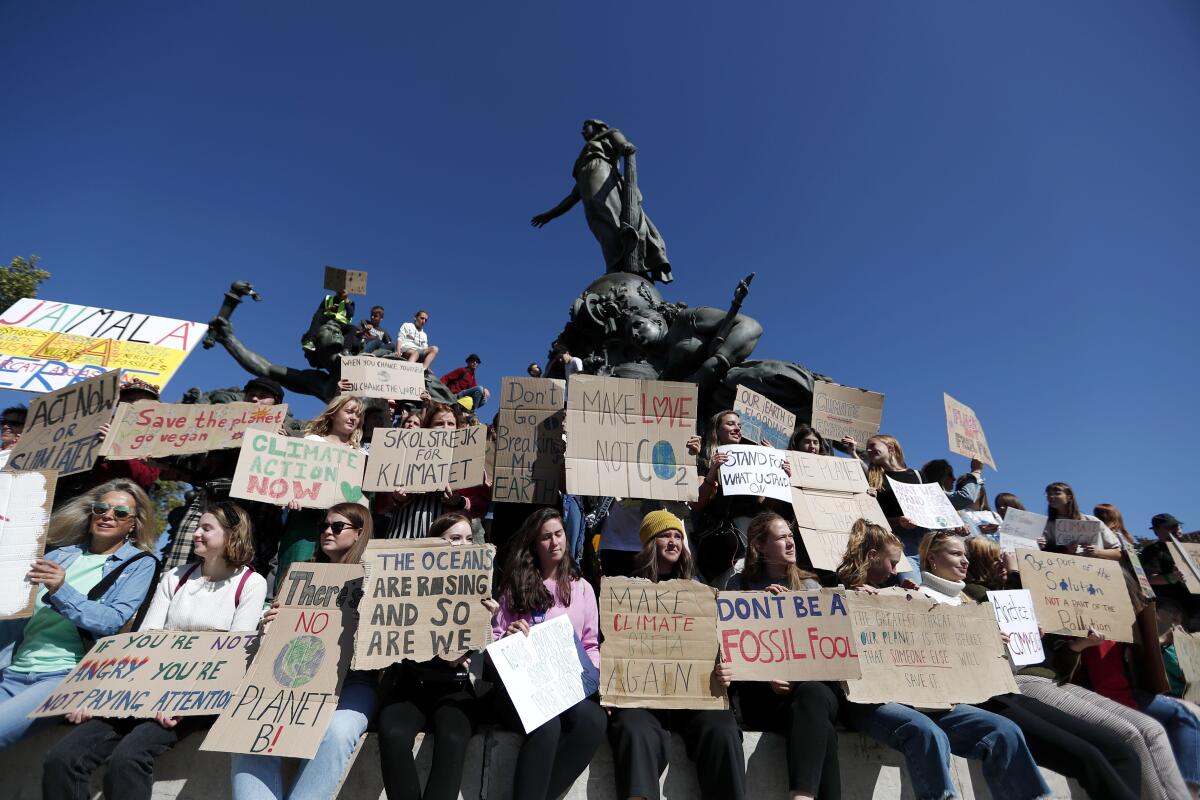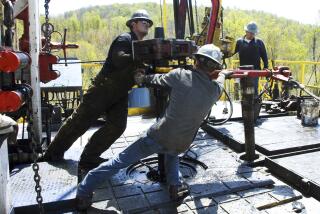Opinion: Listen to the climate strikers. It’s suicidal to stick your head in the sand next to a rising sea

Today’s global climate strike over humankind’s collective failure to take effective measures to address global warming arises, as do most protests, out of frustration over the status quo. And there’s a lot to be frustrated with.
For starters, unless you work in the Trump administration, you have a pretty good idea that we’re cooking ourselves, as well as a pretty good idea how we’re doing it. Driving. Powering industry. Burning fossil fuels to create electricity. Eating too much beef (leading to deforestation and methane emissions). The list goes on.
And you have a pretty good idea, too, of some of the steps necessary to reduce or eliminate carbon emissions. Drive less and use electric vehicles instead of gasoline-burners. Use renewable sources for power generation. Embrace more environmentally friendly diets.
Yet old habits die hard. In 2015, the year the world’s nations agreed in Paris to adopt policies to try to limit the rise in global temperature to less than 2 degrees Celsius above pre-industrial levels (with a preferred target of 1.5 degrees), Americans drove a collective 3.04 trillion miles. Last year, we drove a collective 3.21 trillion miles, an increase of 170 billion miles, the vast majority of it in gas-burning motor vehicles.
Clearly, we have yet to turn this ship around.
Today’s protests should be welcomed, and not with just a nod to the young people who are propelling most of it. Similar to the youth-driven movement for gun control in the wake of the 2018 Marjory Stoneman Douglas High School massacre in Parkland, Fla., the youth drive for climate solutions is a generational demand that the existing power structure get past its internal rivalries, and its susceptibility to lobbying from the very forces that are killing us, and do something about the problem.
But will it? We’ll find out next week at the U.N. climate summit, in which selected leaders of world nations are supposed to trot out concrete plans for reducing carbon emissions. Not pledges. Not platitudes. But real actions and programs.
As The Times editorial board recently laid out in a three-part series, we’re beyond the point of no return on climate change, which has already been a factor in forcing millions of people to migrate, increasing species extinctions, fueling more intense storms and flooding, and on and on.
But that doesn’t mean we should just throw up our hands and sing the chorus from that old R.E.M. song, “It’s the end of the world as we know it, and I feel fine.”
We can and must act to mitigate the worst of what will come. We need to marshal global resources — led by the wealthy nations that profited the most from economies fueled by burning coal and oil — to radically transform the way humankind creates and consume energy.
And yes, it will be expensive, and disruptive. Sen. Bernie Sanders (D-Vt.), once again seeking the Democratic nomination for president, acknowledged that his $16-trillion climate plan would require transforming the energy industry, costing countless jobs in the oil and gas sectors while creating countless jobs in the growing renewable sector.

This isn’t to endorse Sanders or his plan, but he is spot on when he asks, “What is the alternative?”
The alternative is escalating global degradation, exacerbating the extinctions of other species, collapsing global food chains, and in the process making the earth less and less inhabitable for humankind.
And today’s protesters have it right, too. We must do more, better and faster because we have no acceptable alternative.
Two avian-related maxims come to mind. We’ve been fouling our own nest for far, far too long. And it is suicidal to stick our heads in beach sand next to a rising sea.
More to Read
A cure for the common opinion
Get thought-provoking perspectives with our weekly newsletter.
You may occasionally receive promotional content from the Los Angeles Times.











